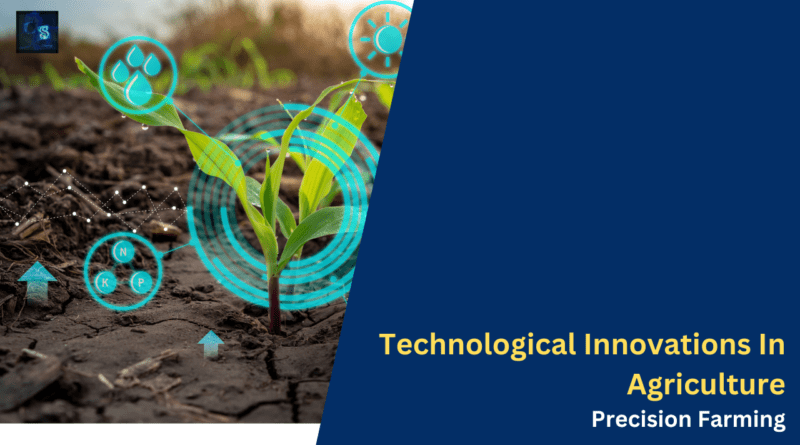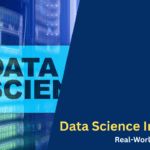Technological Innovations In Agriculture: Precision Farming
Hello, guys, welcome to our blog. Here in this article, we will discuss “Technological Innovations in Agriculture: Precision Farming and Process of Precision Farming.
Ask questions if you have any electrical, electronics, or computer science doubts. You can also catch me on Instagram – CS Electrical & Electronics.
Also, read:
- What Is HiL, Hardware In Loop, Working, Tools Used In HiL
- What Is CPC (Common Powertrain Controller) ECU, Working of CPC
- UDS (Unified Diagnostic Services) Tutorials For Automotive Engineers
Precision Farming
Precision farming, also known as precision agriculture or precision ag, is a modern farming approach that leverages technology and data-driven techniques to optimize crop yields, minimize resource use, and enhance overall farm efficiency. This essay explores the principles, technologies, and benefits of precision farming, showcasing its transformative impact on the agriculture sector.
01. Principles of Precision Farming: Precision farming revolves around the precise management of agricultural practices based on accurate data and technology. It involves the integration of information technology, satellite imagery, sensors, and automation to monitor, analyze, and respond to variability in crop fields. The key principles include site-specific management, data-driven decision-making, and the use of advanced technologies to optimize resource use.
02. Technologies in Precision Farming: Precision farming relies on a range of technologies to gather and analyze data, enabling farmers to make informed decisions. These technologies include a Global Positioning System (GPS) for accurate field mapping, sensors for monitoring soil conditions, drones for aerial imagery, automated machinery for precision planting and harvesting, and data analytics tools for interpreting the information collected.
03. Variable Rate Technology (VRT): VRT is a fundamental component of precision farming that allows farmers to apply inputs (such as fertilizers, pesticides, and water) at variable rates across a field. By mapping the variability in soil characteristics and crop needs, farmers can optimize input application, ensuring that resources are used efficiently and tailored to specific areas of the field.
04. Remote Sensing and Satellite Imagery: Satellite imagery and remote sensing technologies provide farmers with detailed information about crop health, soil moisture levels, and pest infestations. This data helps farmers identify issues early, enabling targeted interventions and minimizing the use of inputs. Satellite imagery also aids in monitoring large agricultural areas efficiently.
05. Data-Driven Decision-Making: Precision farming relies heavily on data-driven decision-making. Farmers collect and analyze data related to soil composition, weather patterns, crop health, and historical yields. This information guides decisions about planting, irrigation, fertilization, and pest control, optimizing practices for maximum efficiency and sustainability.
06. Automated Machinery and Robotics: Precision farming integrates automated machinery and robotics to perform tasks with high precision. Autonomous tractors, planters, and harvesters equipped with GPS and sensors can follow pre-programmed routes, ensuring accurate and consistent operations. This not only saves labor but also reduces the risk of human error.
07. Resource Optimization: One of the primary benefits of precision farming is resource optimization. By tailoring inputs to specific areas of a field based on data insights, farmers can reduce the overuse of fertilizers and pesticides, conserve water through precise irrigation, and minimize environmental impact. This targeted approach contributes to sustainable agriculture practices.
08. Yield Monitoring and Predictive Analytics: Precision farming enables real-time monitoring of crop yields throughout the growing season. By collecting data on factors influencing yield, such as soil quality and weather conditions, farmers can use predictive analytics to anticipate potential challenges and adjust their strategies for optimal outcomes.
09. Environmental Sustainability: Precision farming promotes environmental sustainability by reducing the ecological footprint of agriculture. Through efficient resource use, minimized chemical inputs, and precision application of water, farmers can mitigate the impact of agriculture on ecosystems and contribute to sustainable farming practices.
10. Economic Benefits for Farmers: Beyond environmental and efficiency benefits, precision farming offers economic advantages for farmers. By optimizing inputs and maximizing yields, farmers can enhance their overall profitability. Additionally, reduced labor costs, efficient machinery utilization, and improved decision-making contribute to the economic viability of precision farming.
In conclusion, precision farming represents a paradigm shift in agriculture, harnessing the power of technology and data to optimize farm management. This approach not only enhances productivity and economic outcomes for farmers but also contributes to environmental sustainability by minimizing the environmental impact of agricultural practices. As precision farming continues to evolve, its adoption is likely to increase, shaping the future of agriculture towards a more efficient, sustainable, and technology-driven model.
Technological Innovations in Agriculture: Precision Farming
Agriculture, a sector deeply rooted in tradition, has undergone a revolutionary transformation with the advent of technological innovations. Precision farming, a cornerstone of this transformation, employs cutting-edge technologies to optimize agricultural practices, boost productivity, and ensure sustainable resource use. This essay delves into the technological innovations that characterize precision farming, showcasing its impact on modern agriculture.
01. Global Positioning System (GPS): The integration of GPS technology has been a game-changer in precision farming. GPS enables accurate mapping and positioning of agricultural machinery within fields. Farmers can create detailed maps of their land, allowing for precise navigation of tractors and equipment during planting, fertilization, and harvesting. This technology enhances efficiency and reduces overlaps in resource application.
02. Remote Sensing and Satellite Imagery: Remote sensing technologies and satellite imagery offer farmers a bird’s-eye view of their fields. These tools provide valuable insights into crop health, soil conditions, and pest infestations. By capturing high-resolution images, farmers can monitor large agricultural areas and detect variations that may indicate potential issues, enabling timely interventions.
03. Variable Rate Technology (VRT): Variable Rate Technology allows farmers to customize the application of inputs such as fertilizers, pesticides, and water based on the specific needs of different areas within a field. By utilizing data on soil composition, moisture levels, and crop health, VRT ensures that resources are distributed optimally, maximizing yields and minimizing environmental impact.
04. Automated Machinery and Robotics: The deployment of automated machinery and robotics has transformed field operations. Autonomous tractors equipped with GPS and sensors can follow predetermined paths with high precision, optimizing tasks such as planting, weeding, and harvesting. This not only increases operational efficiency but also reduces the reliance on manual labor.
05. Drones and Unmanned Aerial Vehicles (UAVs): Drones have become invaluable tools in precision farming, offering aerial surveillance capabilities. Equipped with cameras and sensors, drones capture real-time images and data, allowing farmers to assess crop health, monitor irrigation systems, and identify potential issues such as disease outbreaks or nutrient deficiencies. Drones provide a cost-effective means of obtaining timely and accurate information.
06. Data Analytics and Decision Support Systems: Data analytics plays a pivotal role in precision farming, enabling farmers to derive meaningful insights from the vast amount of data generated on the farm. Decision support systems utilize algorithms to analyze data related to weather patterns, soil conditions, and historical yields. This information empowers farmers to make informed decisions about planting strategies, resource allocation, and pest control.
07. Precision Irrigation Systems: Precision farming extends to water management through the use of precision irrigation systems. These systems, often based on sensor data and weather forecasts, enable targeted and efficient water application. By providing the right amount of water at the right time, precision irrigation conserves water resources and enhances crop health.
08. IoT (Internet of Things) Integration: The Internet of Things has found its application in agriculture through the integration of smart sensors and devices. These IoT devices collect real-time data on soil moisture, temperature, and other environmental factors. By connecting to a centralized system, farmers can monitor and control conditions remotely, ensuring optimal growing conditions for crops.
09. Mobile Applications for Farm Management: Mobile applications have become essential tools for farm management. These applications provide farmers with instant access to weather forecasts, market prices, and real-time data from the field. Farmers can use mobile apps to track farm activities, manage inventory, and receive alerts about potential issues, fostering efficient decision-making.
10. Blockchain for Supply Chain Transparency: Blockchain technology is making inroads into agriculture by enhancing transparency in the supply chain. Blockchain ensures the traceability of agricultural products from farm to consumer, providing consumers with information about the origin, production methods, and quality of the products they purchase. This fosters trust and accountability in the agricultural supply chain.
Process Of Precision Farming
Precision farming involves a systematic approach that leverages technology and data-driven techniques to optimize agricultural practices. The process encompasses a series of steps, from data collection and analysis to the implementation of precise interventions. This essay explores the key stages in the process of precision farming, showcasing how technology is harnessed to enhance agricultural precision and efficiency.
01. Data Collection: The first step in precision farming is comprehensive data collection. Farmers gather data from various sources, including satellite imagery, sensors, drones, and on-the-ground observations. This data encompasses critical parameters such as soil composition, moisture levels, topography, and crop health. Advanced technologies, such as GPS-enabled equipment, facilitate accurate mapping of fields, laying the foundation for precise decision-making.
02. Data Analysis and Mapping: Once collected, the voluminous data undergoes sophisticated analysis. Farmers use data analytics tools and geographic information system (GIS) software to create detailed maps of their fields. These maps depict variability in soil characteristics, moisture content, and other factors across the agricultural landscape. Through data mapping, farmers gain insights into the spatial nuances that form the basis for site-specific management.
03. Variable Rate Technology (VRT) Application: Armed with detailed maps, farmers employ Variable Rate Technology (VRT) to customize the application of inputs across different zones within a field. This technology enables precise adjustments in the distribution of fertilizers, pesticides, and water based on the specific needs identified through data analysis. VRT ensures that resources are utilized optimally, addressing variations in soil fertility and crop requirements.
04. Automated Machinery and Robotics: The process involves the integration of automated machinery and robotics equipped with advanced technologies. Autonomous tractors, planters, and harvesters, guided by GPS and sensors, follow predetermined paths with unparalleled precision. These machines perform tasks such as planting, weeding, and harvesting with efficiency and accuracy, reducing the reliance on manual labor.
05. Remote Sensing Technologies: Remote sensing technologies, including satellites and drones, play a crucial role in monitoring and assessing crop health. High-resolution images capture real-time information about vegetation indices, enabling farmers to identify areas of concern such as nutrient deficiencies, pest infestations, or diseases. Remote sensing provides a holistic view of the entire field, aiding in early detection and targeted interventions.
06. IoT (Internet of Things) Integration: The process integrates smart sensors and devices connected through the Internet of Things (IoT). These sensors continuously monitor conditions such as soil moisture, temperature, and environmental parameters. IoT devices transmit real-time data to a centralized system, providing farmers with up-to-the-minute insights and enabling them to make informed decisions remotely.
07. Precision Irrigation Systems: Precision farming emphasizes efficient water management through precision irrigation systems. These systems, often incorporating soil moisture sensors and weather forecasts, enable farmers to precisely regulate water application. By delivering the right amount of water to specific areas at optimal times, precision irrigation conserves water resources and fosters healthier crop development.
08. Decision Support Systems: The integration of decision support systems enhances the decision-making process. Algorithms analyze the collected data, offering actionable insights and recommendations to farmers. These systems provide guidance on optimal planting times, crop rotation strategies, and the application of inputs, contributing to more informed and effective agricultural practices.
09. Monitoring and Adaptation: Precision farming is an iterative process that involves continuous monitoring and adaptation. Farmers regularly assess the performance of interventions based on real-time data feedback. If necessary, adjustments are made to optimize strategies for the evolving needs of the crops and changing environmental conditions.
10. Documentation and Record Keeping: Precision farming emphasizes documentation and record-keeping. Farmers maintain comprehensive records of applied inputs, crop performance, and intervention outcomes. This data serves as a valuable resource for future decision-making, allowing farmers to refine their strategies and build a repository of insights for long-term planning.
In conclusion, the process of precision farming is a dynamic and technology-driven approach that transforms traditional agricultural practices. By harnessing data and advanced technologies, farmers can optimize resource use, enhance productivity, and contribute to sustainable and efficient agriculture. Precision farming stands as a testament to the transformative power of technology in reshaping the landscape of modern agriculture.
This was about “Technological Innovations in Agriculture: Precision Farming “. Thank you for reading.
Also, read:
- Advancements In Power Electronics For Energy Efficiency
- Exploring Electric Vehicles: Technology and Challenges
- The Future of Power Systems: Smart Grids
- What is XCP (Universal Measurement and Calibration Protocol)? Introduction, Working, Purpose, Applications
- What Is SIL Testing, Software-In Loop, Working, Purpose
Author Profile
- Content Writer








